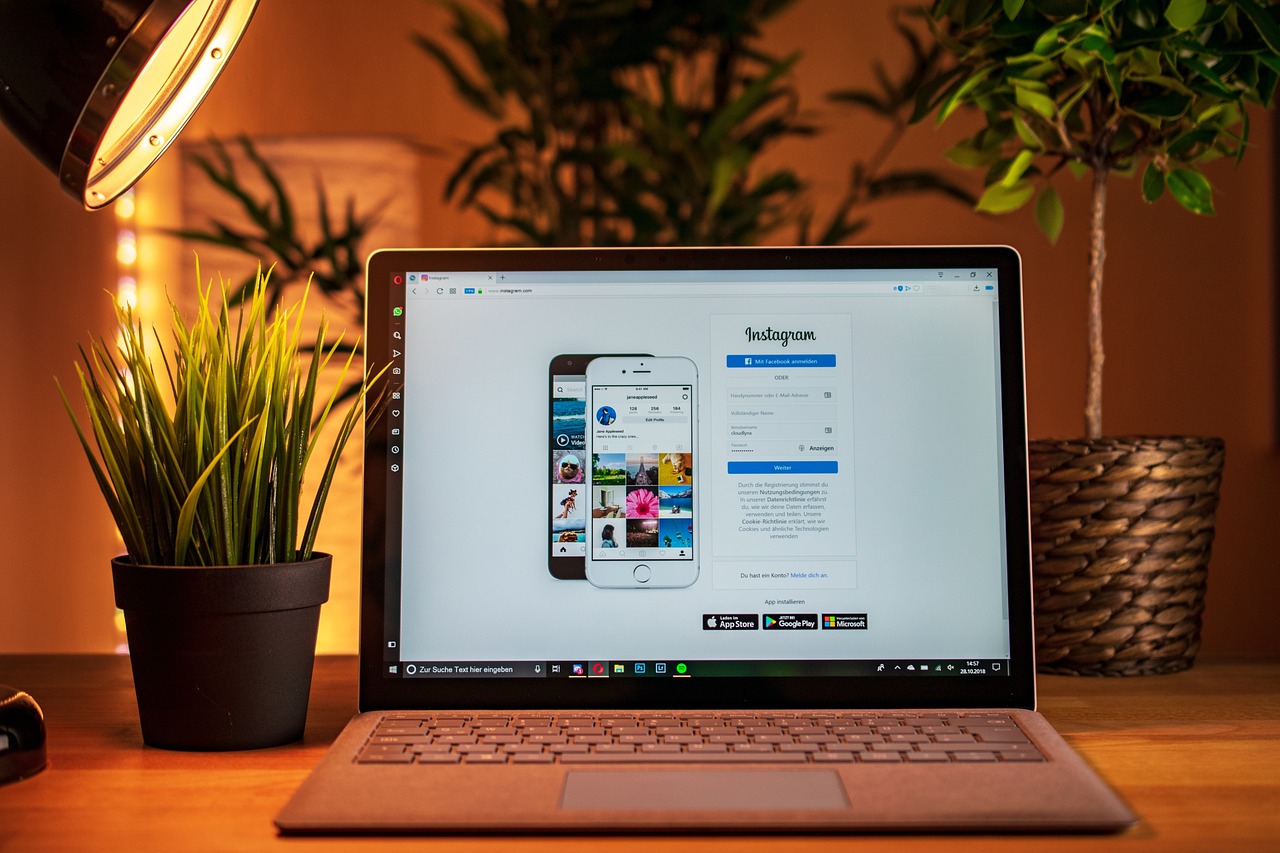
In an era where social media platforms have become integral to our daily lives, the importance of protecting our personal information has never been more paramount. Instagram, with its 1 billion active users worldwide, has emerged as a quintessential hub for self-expression, connection, and content sharing. However, this vast digital landscape also presents potential risks to our privacy if not properly navigated.
As our online presence continues to grow, the need to safeguard our personal data and maintain control over our digital footprint has become increasingly crucial. This comprehensive guide will equip you with the knowledge and strategies to secure your Instagram account, manage your privacy settings, and monitor suspicious activity – empowering you to take ownership of your online privacy and protect your sensitive information from prying eyes.
Securing Your Instagram Account
The first line of defense in safeguarding your personal information on Instagram is to ensure the security of your account. By implementing robust account security measures, you can significantly reduce the risk of unauthorized access and data breaches.
Crafting a Robust Password
Your password is the gatekeeper to your Instagram account, and it must be strong enough to withstand the scrutiny of potential hackers. Avoid using easily guessable information such as your name, birthdate, or common words. Instead, opt for a unique, complex password that combines uppercase and lowercase letters, numbers, and special characters. Consider utilizing a password manager to generate and store these robust credentials, ensuring that each of your accounts has a distinct, unbreachable password.
Enabling Two-Factor Authentication (2FA)
Two-factor authentication adds an extra layer of security to your Instagram account, making it exponentially more difficult for unauthorized individuals to gain access. When 2FA is enabled, you’ll be required to provide a one-time code, in addition to your password, during the login process. This code can be sent to your registered mobile device or generated by an authentication app, effectively preventing access to your account even if your password is compromised.
To enable 2FA on your Instagram account, follow these steps:
- Open your Instagram settings and navigate to the “Security” section.
- Tap on “Two-Factor Authentication” and select your preferred method (e.g., SMS, authentication app).
- Follow the on-screen instructions to complete the setup process.
Regularly Updating Login Credentials
As a best practice, consider updating your Instagram password and reviewing your login activity on a regular basis. This proactive approach helps you stay vigilant and quickly detect any suspicious logins or unauthorized access to your account. By making password updates a routine part of your Instagram security routine, you can significantly reduce the risk of your personal information falling into the wrong hands.
Managing Your Instagram Privacy Settings

Instagram’s robust privacy settings provide you with the tools to control who can see your content and interact with your account. Leveraging these features is crucial for safeguarding your personal information and maintaining the level of visibility you desire.
Switching to a Private Account
One of the most effective ways to limit the visibility of your Instagram content is by switching to a private account. When you have a private account, your posts, stories, and profile information will only be accessible to the users you’ve approved as your followers. This can be particularly beneficial if you wish to share more personal content or restrict access to your account.
However, it’s important to consider the potential trade-offs of having a private account. While it enhances your privacy, it may also reduce your overall reach and engagement within the Instagram community. Carefully weigh the pros and cons to determine the approach that best aligns with your personal preferences and privacy needs.
Controlling Story Sharing
Instagram Stories can be a fun and engaging way to share moments from your daily life, but they can also pose privacy risks if not managed properly. Utilize the “Story Controls” feature within your Instagram settings to decide who can view and share your stories. You can choose to restrict story visibility to your close friends, selected followers, or make them completely private.
Managing Tagging and Mentions
Preventing unwanted tagging and mentions is another crucial aspect of maintaining your Instagram privacy. You can customize your settings to manually approve tags before they appear on your profile, limit who can mention you, and even remove existing tags and mentions that you deem inappropriate or invasive.
Limiting Location Sharing
While the ability to share your location on Instagram can be convenient, it can also compromise your privacy. Consider turning off location services for your Instagram app to avoid revealing your whereabouts to your followers or the broader Instagram community. This simple adjustment can help protect your personal information and prevent potential risks associated with location-based targeting or stalking.
| Location Services | Privacy Implications |
|---|---|
| On | Your location is visible to others when you share posts or stories |
| Off | Your location is not shared, providing better privacy protection |
Managing Third-Party App Permissions
Over time, you may have connected various third-party apps to your Instagram account, granting them access to your personal information and account activities. It’s essential to review and revoke access to any apps that you no longer use or trust to minimize the risk of data breaches and unauthorized access.
Reviewing and Revoking App Permissions
Navigate to your Instagram settings, and within the “Apps and Websites” section, review the list of connected apps. Carefully examine each app and its level of access, and revoke permissions for any apps that you no longer need or don’t recognize. This proactive step can help prevent potential misuse of your personal data and reduce the attack surface for malicious actors.
Leveraging a VPN for Enhanced Security
Utilizing a virtual private network (VPN) can further bolster your online security and privacy when accessing Instagram. A VPN masks your IP address and encrypts your internet traffic, making it significantly more challenging for third parties to track your online activities or intercept your sensitive data, even when using public Wi-Fi networks.
Monitoring Suspicious Activity

Maintaining vigilance and actively monitoring your Instagram account for suspicious activity is crucial to safeguarding your personal information. By regularly reviewing your account’s login history and quickly addressing any anomalies, you can significantly mitigate the risks of unauthorized access and data breaches.
Reviewing Login Activity
Regularly check your Instagram login activity within your account settings to ensure that all logins are recognized and authorized. Pay close attention to the location, device, and time of each login, and promptly investigate any unfamiliar or suspicious activity. This proactive monitoring can help you identify potential security breaches and take immediate action to secure your account.
Blocking and Reporting Suspicious Accounts
If you encounter accounts that are engaging in suspicious behavior, such as sending unsolicited messages, attempting to access your personal information, or exhibiting other malicious intent, take immediate action. Block these accounts and report them to Instagram’s support team. By taking these steps, you can help protect not only your own privacy but also contribute to the overall safety of the Instagram community.
Recovering a Hacked Account
In the unfortunate event that your Instagram account is compromised, time is of the essence. Swiftly contact Instagram’s support team, provide the necessary verification to prove your identity, and change your password and other login credentials immediately. This swift response can significantly increase your chances of regaining control of your account and mitigating the potential damage caused by the breach.
Best Practices for Maintaining Instagram Privacy
To ensure the ongoing protection of your personal information on Instagram, consider adopting the following best practices:
Regularly Reviewing Privacy Settings
Instagram’s privacy settings are frequently updated to address evolving security concerns and user needs. Therefore, it’s essential to periodically review and adjust your preferences to ensure they align with your current privacy requirements. Stay informed about the latest privacy features and updates, and make informed decisions about the level of visibility and accessibility you desire for your Instagram presence.
Exercising Caution with Personal Information
Avoid sharing sensitive personal information, such as your phone number, email address, or physical address, publicly on your Instagram profile or in your posts. This data can be used by malicious actors to compromise your privacy or enable unwanted contact and potential harassment. When sharing personal details, consider the potential risks and exercise discretion to maintain your digital well-being.
Conclusion
Safeguarding your personal information on Instagram is a critical responsibility in today’s digital landscape. By implementing the comprehensive strategies outlined in this guide, you can enhance the security of your Instagram account, effectively manage your privacy settings, and vigilantly monitor your account for any suspicious activity.
Remember, maintaining online privacy is an ongoing process that requires diligence and adaptability. Stay informed about the latest Instagram privacy features, continuously review your settings, and be proactive in addressing any potential security concerns. Your digital well-being and the protection of your personal information should be a top priority as you navigate the vibrant, ever-evolving world of Instagram.
